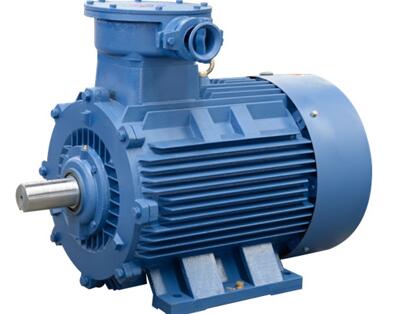
Explosion-proof permanent magnet motor is a type of motor with explosion-proof performance and does not produce sparks during operation. This motor is mainly used in coal mines, oil and gas, petrochemical and chemical industries. In addition, there are many classifications of explosion-proof permanent magnet motors, and each type has its own advantages and application areas. What I want to share with you below is the classification and selection principles of explosion-proof permanent magnet motors. I hope it can help you!
1. Classification of explosion-proof permanent magnet motors
So far, the commonly used types of explosion-proof motors include explosion-proof type, positive pressure type, increased safety type and non-sparking type.
1. Due to their complex structures, explosion-proof and positive-pressure explosion-proof motors are more than twice as expensive as ordinary motors, and require higher technical and management levels during maintenance. In other dangerous environments, It is recommended not to use this type of motor or to use it as little as possible.
2. Increased safety explosion-proof motors have a higher design temperature rise than ordinary motors. In addition, this type of motor also has strict special requirements for relay protection, so this type of motor is generally not used.
3. The structure of the non-sparking explosion-proof motor is roughly the same as that of ordinary motors, except that the requirements for the shell protection level and junction box structure are higher; in addition, some reliability measures have been added to the manufacturing process conditions, so its reliability is higher. Among all types of explosion-proof motors, its price is only slightly higher than that of ordinary motors.
2. Principles for selecting explosion-proof permanent magnet motors
Once a powder explosion site is determined, the electrical equipment within its scope must adopt explosion-proof electrical equipment of the corresponding level or above. Explosion protection in dust places is different from explosion protection in combustible gas places. Electrical equipment installed in explosive hazardous environments with grain dust should be selected in accordance with relevant regulations. And the selection of explosion-proof permanent magnet motors should comply with the following principles:
1. Surface quality technical requirements for explosion-proof motors
The surface quality requirements of explosion-proof permanent magnet motor frame castings are as follows: the surface treatment should meet the requirements, there should be no traces of sand after cleaning, and casting defects (total) such as pores, shrinkage holes, trachoma and shrinkage porosity on the surface should not exceed the requirements. , the depth of the defect should be less than the machining allowance, the area is not limited, no traces should be left after processing, the depth of the defect should be less than the machining allowance, the area is not limited, the surface roughness after processing should meet the requirements, there should be no cracks and cold isolation, the processed parts There is no trace of damage after processing.
2. Other technical requirements
For the welding base of an explosion-proof permanent magnet motor, check whether there are pores, undercuts, inclusions, welding flow, surface cracks and other defects on the welding surface; the main technical parameters such as the base, end cover, bearing cover, junction box, etc. should comply with the requirements of the inspection drawings ; Have a valid inspection report and a valid explosion-proof electrical accessories production qualification certificate or explosion-proof electrical production license; purchasing explosion-proof motor casings for use in our factory's safety certification or production license products should confirm that they meet the certification product consistency requirements.



















